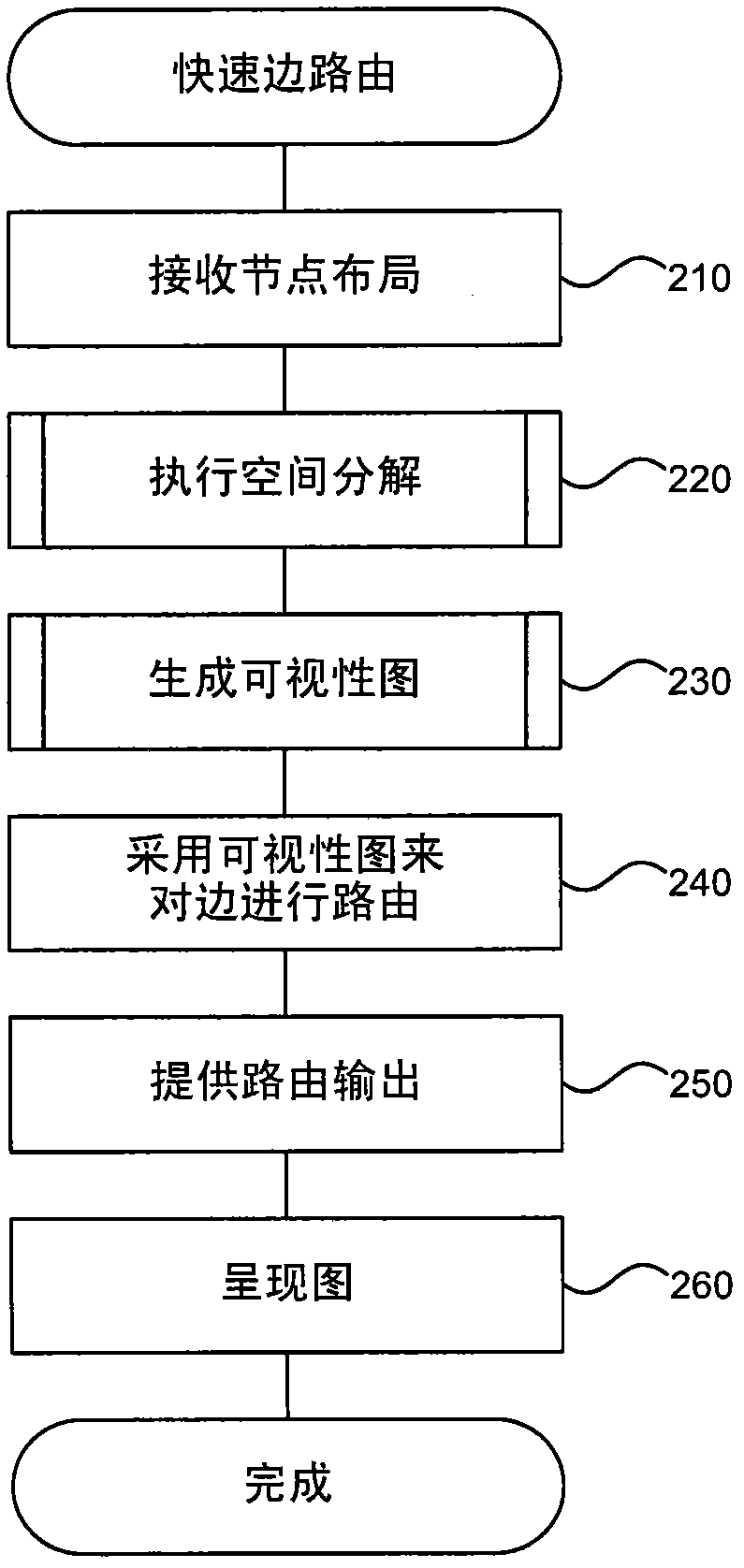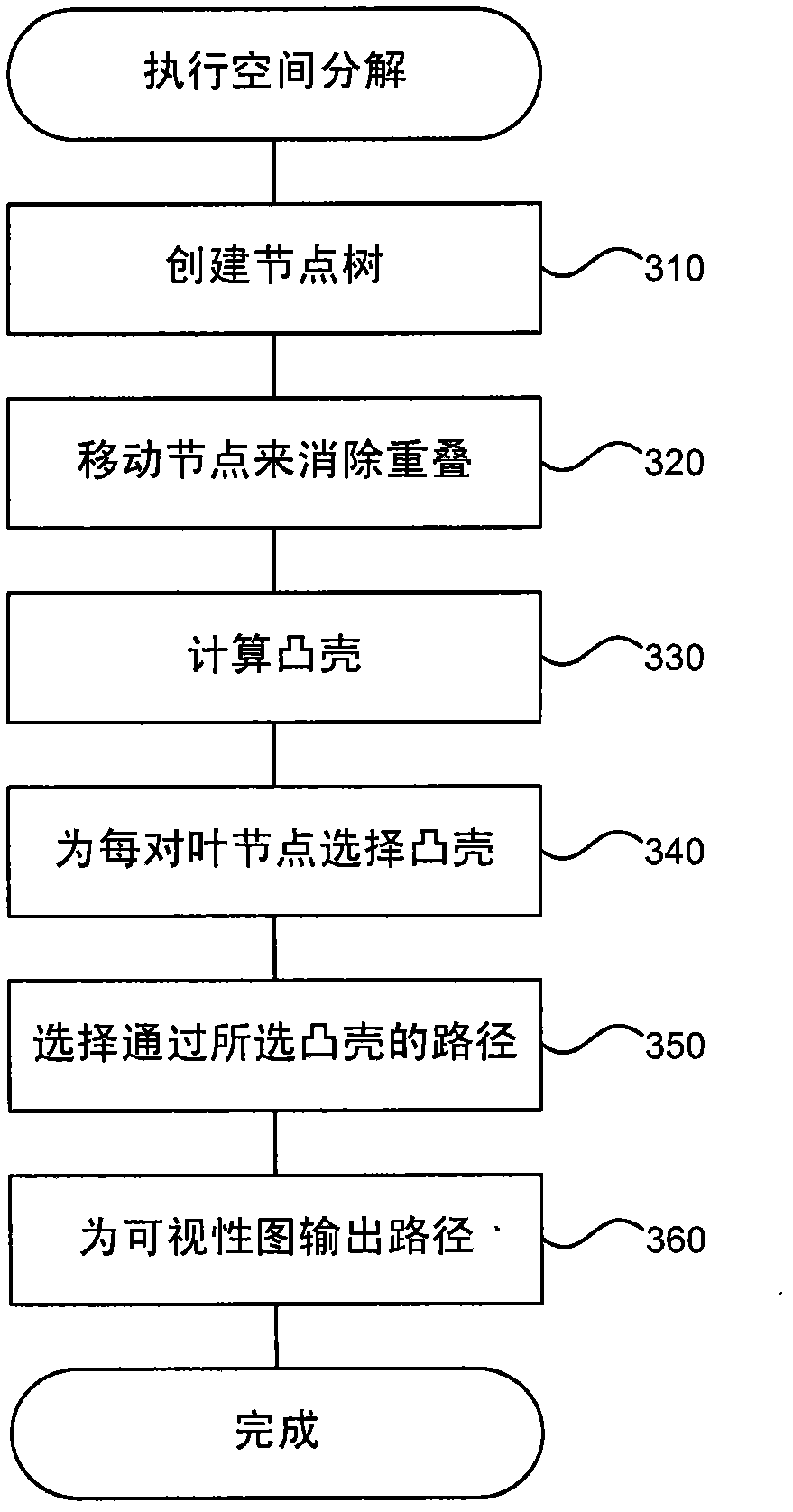Fast Edge Routing for Interactive Mapping
A routing, fast technology, applied in the field of interactive mapping, which can solve problems such as slow computational overhead
- Summary
- Abstract
- Description
- Claims
- Application Information
AI Technical Summary
Problems solved by technology
Method used
Image
Examples
Embodiment Construction
[0015] An edge routing system using spatial decomposition for faster routing and a cone generator for faster generation of sparse visibility graphs is described here. The system provides two approaches that use approximate shortest paths that can be used alone or in combination to achieve faster and thus more scalable and interactive edge routing. The first method uses a spatial decomposition of the nodes in the graph, shifting them slightly to get strictly disjointed convex hulls around groups of nodes, and then computing the visibility graph over these resulting shells rather than individual nodes. The second method generates a sparse visibility map generator to speed up the process of generating visibility maps. These two technologies are complementary, i.e. they can be used together for faster routing. Prior to this, high-quality edge routing for obstacle avoidance was not considered for use in large graphs (with hundreds or thousands of nodes) or for interactive mapping ...
PUM
 Login to View More
Login to View More Abstract
Description
Claims
Application Information
 Login to View More
Login to View More - R&D
- Intellectual Property
- Life Sciences
- Materials
- Tech Scout
- Unparalleled Data Quality
- Higher Quality Content
- 60% Fewer Hallucinations
Browse by: Latest US Patents, China's latest patents, Technical Efficacy Thesaurus, Application Domain, Technology Topic, Popular Technical Reports.
© 2025 PatSnap. All rights reserved.Legal|Privacy policy|Modern Slavery Act Transparency Statement|Sitemap|About US| Contact US: help@patsnap.com



